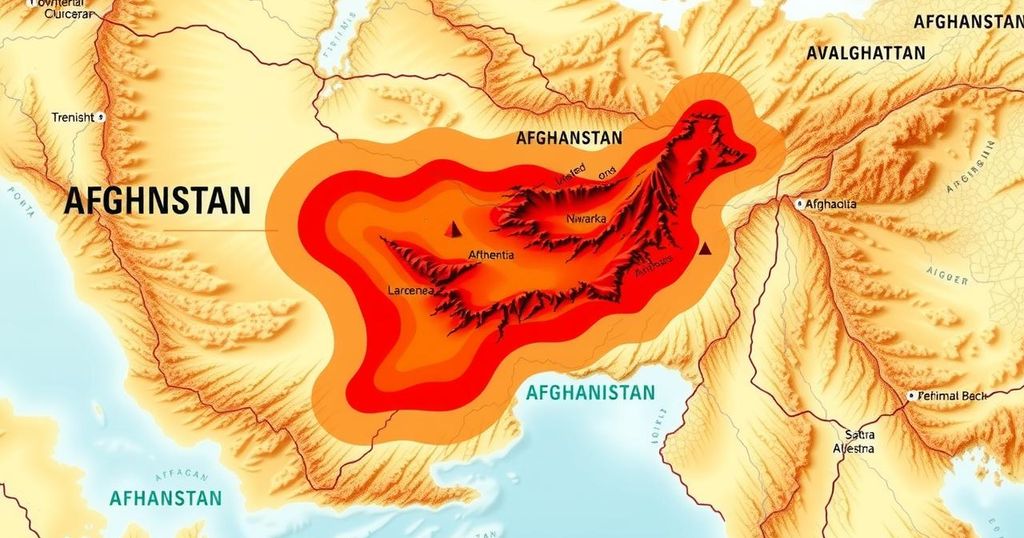Magnitude 4.0 Earthquake Strikes Afghanistan Amid Ongoing Natural Disaster Vulnerability
Afghanistan was struck by a 4.0 magnitude earthquake on Monday, which occurred at a shallow depth, increasing the risk of damage and aftershocks. The region remains highly vulnerable to such natural disasters, as noted by UNOCHA. Concurrently, flooding in Argentina has resulted in multiple fatalities and missing persons, further illustrating the impact of natural disasters worldwide.
On Monday, Afghanistan experienced a 4.0 magnitude earthquake, according to a statement from the National Center for Seismology (NCS). The earthquake struck at a depth of 10 kilometers, making the region prone to aftershocks. The NCS reported the coordinates and details of the quake via its platform, noting the location was in the Hindu Kush region.
Shallow earthquakes, like this one, pose greater risks than deeper ones due to their proximity to the Earth’s surface, which results in stronger ground shaking and potential structural damage. In a related incident, Pakistan was affected by a 4.2 magnitude earthquake earlier the same day, only two days following another quake of 4.3 magnitude that occurred in the region.
According to the United Nations Office for the Coordination of Humanitarian Affairs (UNOCHA), Afghanistan is particularly susceptible to a variety of natural disasters, including seismic events, landslides, and seasonal flooding. Frequent earthquakes exacerbate the challenges faced by communities that are already vulnerable due to years of conflict and underdevelopment.
The historical context highlights that Afghanistan lies on numerous fault lines, as it is situated between the Indian and Eurasian tectonic plates. This geological setup renders the Hindu Kush Mountain range an active earthquake zone, where seismic activities are commonly recorded on an annual basis.
In other news, recent heavy rains in Argentina have resulted in significant flooding, leading to the deaths of at least 15 individuals, as reported by officials. Rescue operations are underway for dozens of others reported missing, particularly in the city of Bahía Blanca, which has faced extraordinary rainfall. Authorities have evacuated more than 1,450 residents, including hospital patients, due to the calamity.
In conclusion, the recent 4.0 magnitude earthquake in Afghanistan highlights the region’s vulnerability to natural disasters, underscored by its geological characteristics. Additionally, the simultaneous flooding in Argentina emphasizes global challenges linked to extreme weather events, reinforcing the need for robust disaster preparedness strategies in susceptible regions.
Original Source: www.mid-day.com




Post Comment